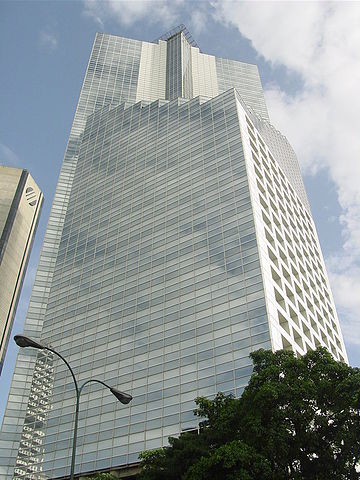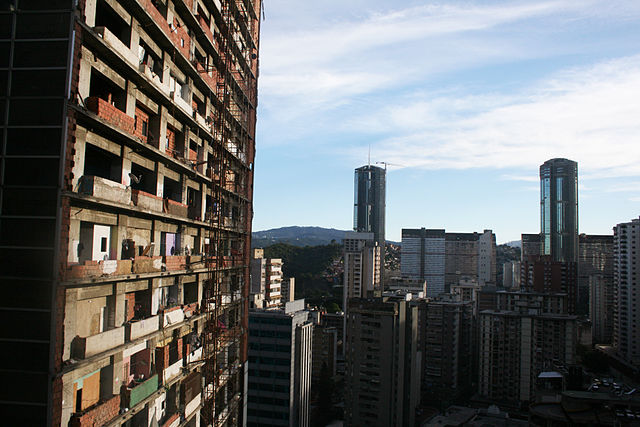The Deluxe Apartments in the Sky

In 1990, a real estate investor named David Brillembourg led the financing for a 45-story skyscraper in Caracas, the capital of Venezuela. The building, seen above in a picture from 2004, is known officially as the Centro Financiero Confinanzas, but is colloquially named the Torre de David (“Tower of David”) after Mr. Brillembourg. The building is the third tallest in the country, extending 620 feet (190 meters) above the ground — but maybe it shouldn’t count. That’s because the building was never completed. Mr. Brillembourg passed away in 1993 and in 1994, Venezuela’s economy crumbled as multiple large banks failed and were bailed out to the tune of $12 billion. The government seized the building during the crisis and halted work on it. As of this writing, twenty years later, the government has done nothing with the building, leaving it as an empty remnant of a boom era collapse.
Unofficially, though, the Torre de David was, until recently, home to about 2,500 to 3,000 people.
The building, due to its arrested development, lacks a lot of things one would expect in a high-rise of its caliber. Many walls and windows are missing. There are no elevators and many of the stairwells and balconies lack railings. Basic utilities such as running water and a sewage system were not yet installed when construction stopped in 1994. (There is, however, a 12-floor parking lot and a heliport.) These deficiencies make the building unsuitable for any landlord to try and rent out units.
But Venezuela has an enormous housing problem. As the Guardian explained in 2001, “51% of the population lives in precarious shantytowns with no access to basic services” and “in the capital city alone, there is a shortage of almost 400,000 houses.” That general picture has been roughly the same since. Basic services, unfortunately, are not all that basic. So in 2007, a group of about 300 people broke into the building — it was better than de facto homelessness.
In the years subsequent, the Torre de David’s ostensibly illegal residents have transformed the building into something more livable. There’s a community board that informally governs the building, making sure that the elderly residents have units toward the ground floors while more able-bodied people reside higher up. According to Vice, the first ten floors are now accessible by motorcycle — a far cry from the elevators that should be there, but it’s better than taking the stairs multiple times a day. The Torre de David still lacks running water, but there’s a motorized system for delivering water to higher floors now. There are reports of beauty salons and Internet cafes open in the building. A New York Times profile of the building, also from 2011, notes that “dozens of DirecTV satellite dishes dot the balconies.”

But those makeshift alterations shouldn’t overshadow the ramshackle state of the building. The building, as of December 2013, can be seen in the picture above (it’s the exposed-exterior building on the left), and it’s clearly much more dangerous than a building should be. A further collection of photos on News.Mic show holes in walls that are used instead of doors and a collection of staircases floating in impossible spaces. The conditions have caused numerous tragedies over the years.
The Venezuelan government has offered to find other, more appropriate housing for the tower’s inhabitants, but that promise (like many of Hugo Chavez’s) rang hollow. And with that promise undelivered upon, the Torre de David isn’t quite as bad as the alternatives that already exist. Just ask the people who live there: “Compared to housing in many other neighborhoods, we have a pretty good quality of life,” one of the community’s administrators explained to New York magazine.
In July of 2014, the government evicted the residents, who were relocated to Cua, a town south of Caracas.
Bonus Fact: The residents of Torre de David may be right — as dangerous as the building is, the rest of the city is probably worse. Caracas’ murder rate in 2013 was the second-highest in the world (excluding the Middle East) at 134.36 per 100,000 residents.
From the Archives: Lightning Lake: More lightning than you can imagine. All in one place.
Related: “Comandante,” a biography of Hugo Chavez. 4.3 stars on 41 reviews.
